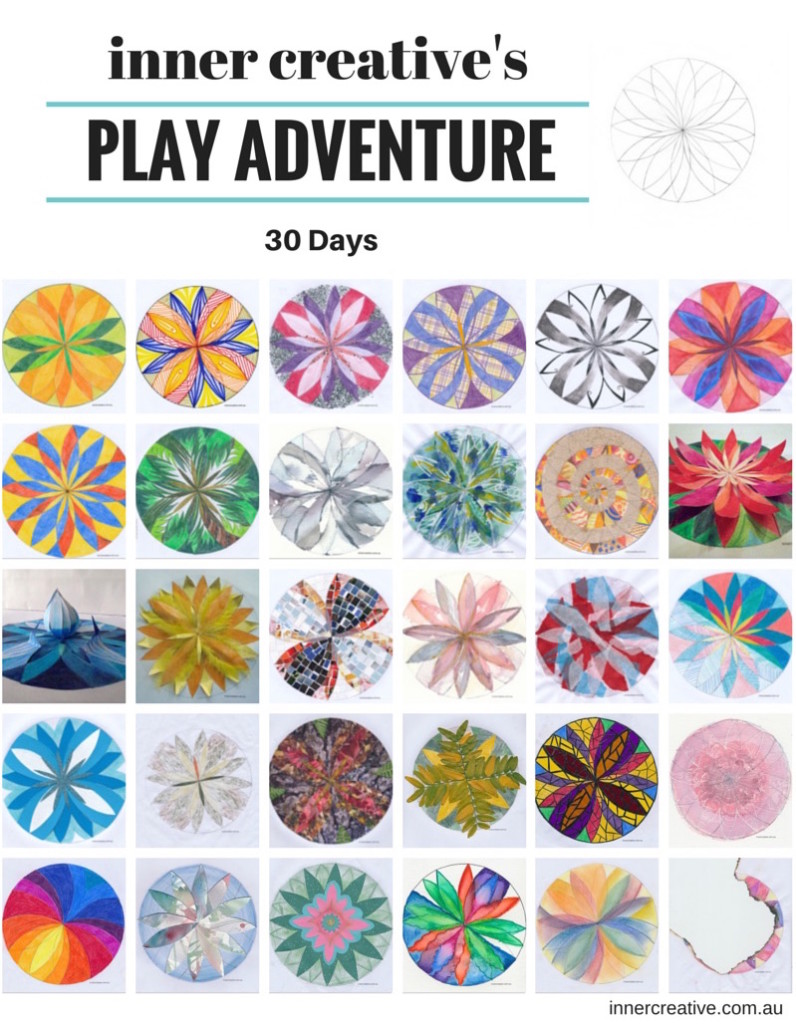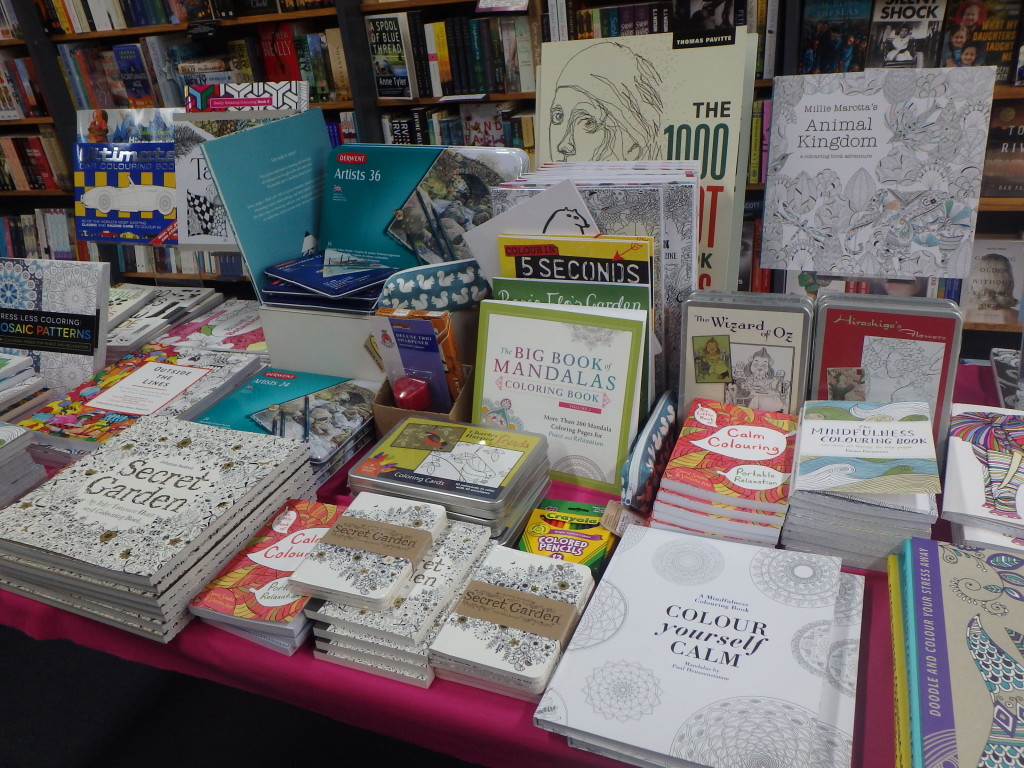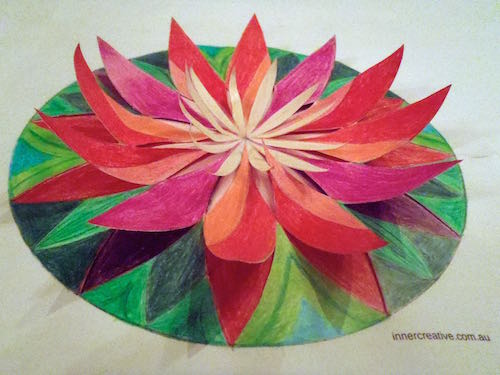Category Archives: Getting inspired and creative
What was the Mandala Play Adventure about?
In early April 2015, I went on a Play Adventure where each day for 30 days I ‘coloured in’ a mandala colouring page (that I had previously created).
Here are all thirty designs that I created out of that one mandala colouring page. I even surprised myself by how many different and unique results I could create out of such a seemingly simple outline.

This Play Adventure was rewarding in so many ways. I introduced more play and fun into my day. I got to express myself creatively. I learnt more about the creative process and what worked for me. It also got me thinking about creative inspiration, taking risks and how ideas can flow. I learnt so much! I captured my learning in the following blogs each week:
Continue readingIs colouring in really being creative?
Unless you’ve been living in an internet-free cave during the last year, you might have noticed the growing popularity of colouring books for adults – yes, for adults, that’s right :-). And I’m not talking about cartoon or franchise inspired designs, but intricate, detailed and complex illustrations created by artists.

I’ve been happily watching this space with interest over the last year. There has been increasingly more press about the benefits of colouring. And I am still blown away that my Colouring For Grown Ups board on Pinterest is my most popular board, with around 4 times as many followers as most of my other boards. But I really knew that it was a “thing”, when I walked into my local bookstore to see their front display table full of adult colouring books! And then again, when I saw a big display at a large department retailer.

Colouring books on display at Jeffreys Books
Colouring in has become associated with the growing interest in mindfulness and seeking ways to destress and unwind in our increasingly high paced 24/7 lives. It’s even being used by companies to support staff in relation to workplace stress. And while colouring in can create some beautifully stunning results, is it really being creative?
Continue reading
Creativity tips – How Ideas Are Like Seeds – Insights from the Mandala Play Adventure

So the 30 day mandala Play Adventure has come to an end. It has been challenging but it was definitely worth it. It’s been so rewarding, and I had so much fun! And I think that keeping a playful mindset was definitely a contributing factor.
At the start I wasn’t quite sure that I’d be able to colour the same mandala colouring page in 30 different ways. But I dived in to see where the adventure would take me. I ended up finishing with so many ideas still left inside of me. Who knows? I might have been able to create another 30 mandalas, or even more?
This unexpected flow of ideas has got me thinking about how we sometimes impose limits on our creativity through scarcity thinking. We can falsely hold onto our ideas, worried that if we use them (or share them) that there’ll be nothing left.
But our first ideas might not even be the best ones. In InGenius, Tina Seelig writes that people often fall into the trap of going with the first solution they find, rather than taking the time to work a little harder to come up with a more innovative response. (She refers to Tim Hurson’s ‘3rd third’ concept from Think Better to explain this further.) It’s as if our ideas come in waves or sets. The first set of ideas are pretty obvious (and if you want a quick fix then this might be fine). However, if you dig a bit deeper then you get a more interesting set of ideas. As you continue to push the boundaries and test the limits of your assumptions and what’s possible, then you’ll get progressively more innovative sets or waves of ideas (which may result in a more effective and/or far-reaching solution). For this reason, Seelig asks participants in brainstorming sessions to share their worst ideas up front. This way participants turn off their judgment and open their minds to lots more possibilities than if they only shared their initial, and most likely to be obvious, response to the issue.
You can see how this concept of idea waves plays out over the 30 days of my Mandala Play Adventure. For instance, I couldn’t have created the 3D lotus mandala from Day 12 on the first day.

As I wrote in my previous blog about inspiration, our ideas are not created in isolation from one another. So I prefer to think that by using or creating something from our one idea that we plant a seed for another idea to follow.

Creativity tips – How to find creative inspiration – Insight from the final part of the Mandala Play Adventure
The final week of the mandala Play Adventure!

In the last 9 days of the Play Adventure I started to wonder if I would run out of good ideas. I was worried that I mightn’t be able to produce interesting and unique designs. So it got me thinking about the part that inspiration plays in creating new ideas.
 We commonly view inspiration as that light bulb ‘aha’ moment where in a moment of clarity we come up with the solution out of the blue. But that’s not totally true. Our ideas are never formed in isolation to anything else (although it may often seem like that).
We commonly view inspiration as that light bulb ‘aha’ moment where in a moment of clarity we come up with the solution out of the blue. But that’s not totally true. Our ideas are never formed in isolation to anything else (although it may often seem like that).
Our brains are pattern-seeking machines, looking to make sense of any new information we receive through our experience and senses, by forming connections and associations with what we already know. Continue reading


